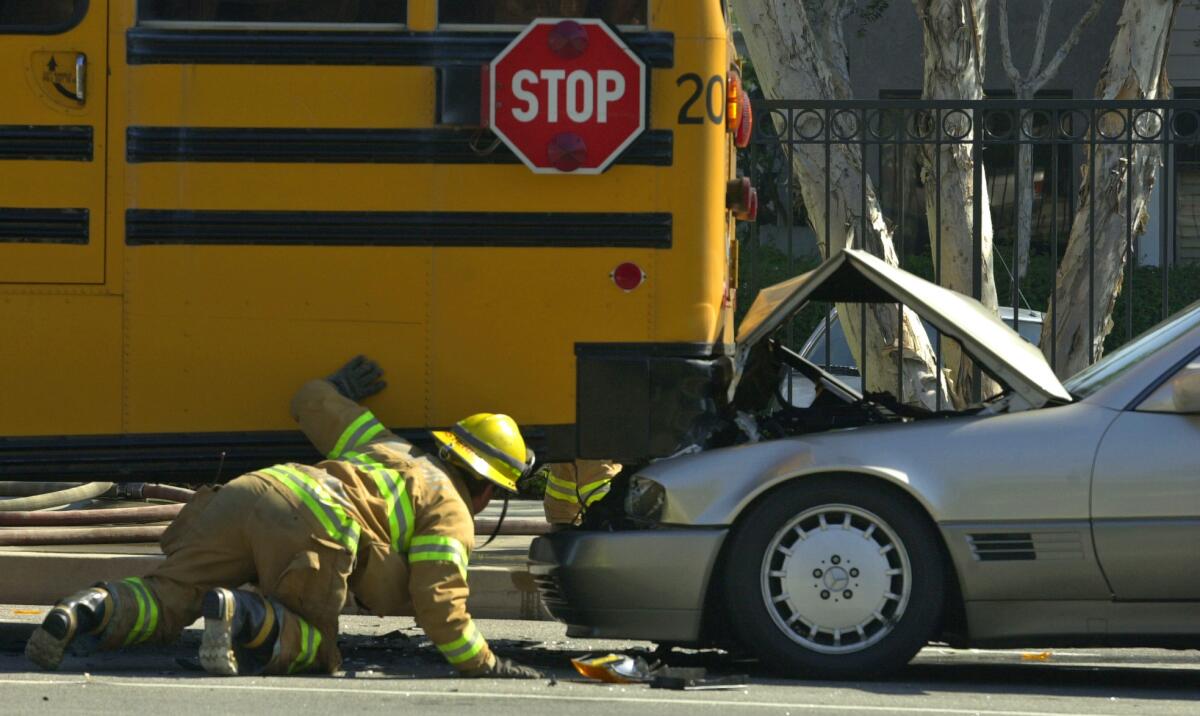Federal agency to recommend two new braking technologies on all cars

Looking to curb rear-end collisions, federal safety regulators announced plans Thursday to add two new features to a list of recommended safety technologies.
The move by the National Highway Traffic Safety Administration is also the first step in potentially mandating the braking features on all vehicles in the future.
“I want this department, the entire automotive industry and other innovators to keep raising the bar on safety like we are doing now,” said U.S. Transportation Secretary Anthony Foxx, who oversees the Department of Transportation and NHTSA.
Both features relate to automatic emergency braking and are already available on numerous vehicles -- many of them from luxury brands.
Crash Imminent Braking (CIB) automatically applies a vehicle’s brakes when sensors detect a crash is about to happen and the driver has not yet applied the brakes. Dynamic Brake Support (DBS) boosts the level of braking if the driver is not pushing hard enough and a crash is determined to be inevitable.
According to NHTSA data, a third of all police-reported crashes in 2013 involved a rear-end collision. In a large number of those crashes, drivers either didn’t brake at all or didn’t brake hard enough, the agency reported.
Automatic braking “is one of the key features that needs to be in our journey to autonomous vehicles,” said Terry Haggerty, chief engineer, Ford’s Research & Advanced Electrical and Electronics Engineering.
Haggerty said there is a growing consensus among safety regulators, automakers and the engineering community that so-called active safety systems such as collision warnings and automatic braking are both needed and will be increasingly demanded by consumers.
He said nearly every automaker either has such systems in production cars or is working on them. Ford has a system that alerts drivers to a potential collision available in some vehicles but has yet to equip its cars with automatic braking.
NHTSA is hoping to add CIB and DBS to a list of features that it recommends buyers look for when shopping for a new vehicle. That checklist, called the New Car Assessment Program (NCAP), includes forward collision warning, lane departure warning and backup cameras.
None of these features are currently required on vehicles in the U.S., though it’s not unusual for advances that NHTSA promotes on this list to eventually be mandated. Backup cameras will be required on all U.S. vehicles starting in May 2018.
“I think it’s good news,” said David Zuby, executive vice president and chief research officer for the Insurance Institute for Highway Safety, an independent safety organization. “Our research is showing those technologies have been preventing crashes, so this shows that the government agrees that this is worth promoting to the public.”
NHTSA said that since 1960, additions to its NCAP checklist have saved more than 613,000 lives. Earlier additions include seat belts, air bags and electronic stability control.
Over the next 60 days, NHTSA will collect feedback from consumers and automakers on the proposed recommendations. Based on those comments, the agency may make changes before making a final decision to add the braking technologies to its NCAP checklist.
Times staff writer Jerry Hirsch contributed to this report.






